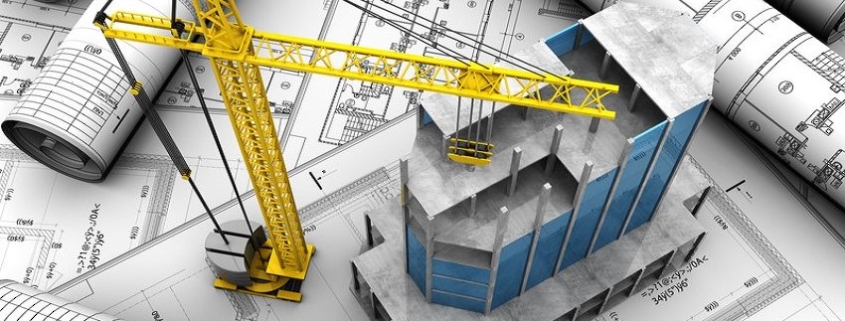An Ohio developer hopes to break ground early next year on a new Veterans Affairs Outpatient Center here.
The proposed 131,000-square-foot center would replace two smaller nearby VA facilities when it opens in either late 2022 or early 2023.

A rendering of what the new VA Center would look like. (CREDIT: News-Journal/Clayton Park)
Developer Rustom Khouri III said his company is still waiting to find out if it will be awarded the federal government contract to build the project. That decision is expected in the next 30 to 45 days.
“We’re very optimistic,” said the director of business development for Carnegie Management & Development Corp. “We’re already going through the zoning approval process with the City.”
Khouri and officials from Harris Civil Engineers in Orlando just presented plans for the project. The developer-initiated neighborhood meeting was held via a Zoom videoconference call.
Carnegie put the 78-acre site under contract late last year to purchase from Volusia County Schools for $4.5 million. The mostly wooded site is on the west side of Williamson Boulevard, directly south of Daytona State College’s Advanced Technology College.
The developer is based in the Cleveland, Ohio, area. To date, Carnegie has developed a dozen facilities for the U.S. Department of Veterans Affairs in multiple states. This would be its first in Florida.
“We want this to be a best-in-class healthcare facility for veterans in the Daytona Beach area,” Khouri said.
Khouri declined to estimate how much the project would cost to build. He said that would depend on the amount of the federal government contract when or if it is awarded.
Al Bogna, vice president of real estate for Carnegie, told Volusia County School Board members in November of last year that the project could cost between $60 million and $70 million to build.The project is expected to create 300 construction jobs. Carnegie submitted its proposal to the federal government after the General Services Administration in early November issued a request for bids from developers.
The U.S. Department of Veterans Affairs wants a larger outpatient center that could serve as a one-stop location for veterans in the Daytona Beach area. The GSA request for bids specifies that the new VA outpatient center would need to be within the area between West Granada Boulevard to the north, Dunlawton Avenue to the south, Tymber Creek Road to the west and Ridgewood Avenue to the east. Khouri said he is unaware of bids from any other developers for the VA project in Daytona Beach.
The two older VA facilities the project would replace are the William V. Chappell Veterans Multi-Specialty Outpatient Clinic off Dunn Avenue and the Westside Pavilion Uniform Mental Health Services Annex at 1620 Mason Ave. The two clinics have a combined total of roughly 74,000 square feet of space.
“The current space in these facilities is insufficient to meet the projected needs of the veteran community,” the GSA’s request for lease proposals stated. “The new facility … will provide a single location in the Daytona Beach area to serve the outpatient needs of veterans and their families.”
The proposed new VA outpatient center would provide primary care, mental health, and specialty medical care services. It would include a medical lab, a pharmacy, physical rehabilitation facilities, and eye and dental clinics.
“It would also offer prosthetic and sensory aid devices and radiology and speech pathology services,” said Khouri. “The center would include an on-site canteen. Some veterans in the Daytona Beach area drive more than an hour to Orlando for VA services.”
Volusia County is currently home to more than 50,000 military veterans, according to the most recent Census Bureau estimates.
“A new VA outpatient center is certainly much needed in this area,” said Khouri. “It’s a high-growth market, both in veterans and overall population. When we came down to this market almost two years ago, we came into contact with several veterans who voiced a need for something like this.”
The campus for the proposed VA outpatient center would include more than 50 acres set aside for “future growth.” The 24 acres where the center would be built would include a “flag pole plaza” near the entrance, surface parking for 750 cars, as well as gardens, trails and a large storm water retention pond.
“We’re trying to create a campus feel,” said Khouri. “The North Williamson Boulevard corridor is really beautiful. We want to maintain a lush tree line along Williamson as well as being environmentally sensitive.”
“Plans call for adding trees to the campus as well,” said Abdul Alkadry, a project manager with Harris Civil Engineers.
The new VA outpatient center is expected to generate approximately 1,400 daily car trips to and from the facility. Plans call for the construction of two new entrances off of Williamson. The stretch of North Williamson Boulevard where the VA outpatient center would be built is currently being widened from two to four lanes. The proposed project is just north of the LPGA Boulevard corridor that has become a hotbed for new home construction and commercial development activity in recent years.
Khouri said he believes the widening of Williamson should be more than enough to accommodate the extra traffic the VA outpatient center would generate.
“We’re very hopeful and confident we can deliver a product that will be able to serve veterans and be a positive addition to the community,” Khouri said.
Source: The Daytona Beach News-Journal





